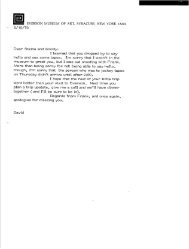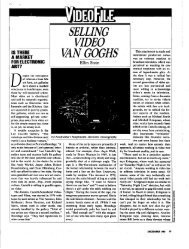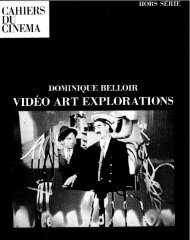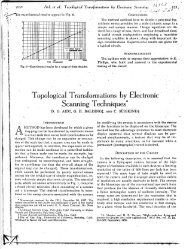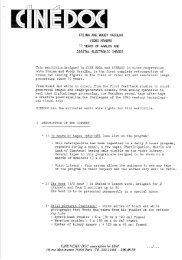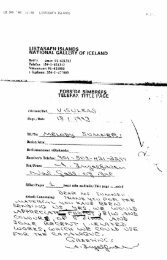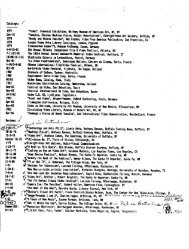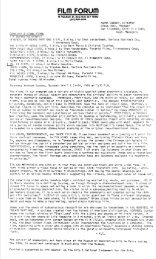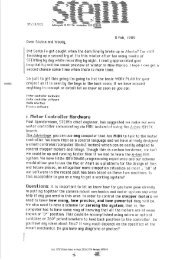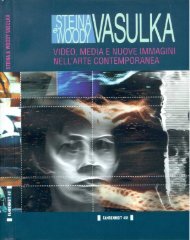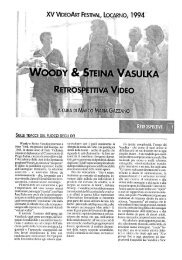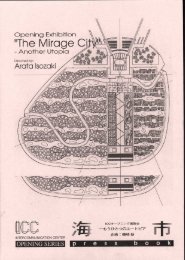MEDIA STUDY/BUFFALO - the Vasulkas
MEDIA STUDY/BUFFALO - the Vasulkas
MEDIA STUDY/BUFFALO - the Vasulkas
You also want an ePaper? Increase the reach of your titles
YUMPU automatically turns print PDFs into web optimized ePapers that Google loves.
The American Film Institute Presents<br />
The British Film Institute :<br />
Independent Films 1951 -1982<br />
Produced on <strong>the</strong> occasion of <strong>the</strong> British Film Institute's 50th anniversary, The American<br />
Film Institute Presents <strong>the</strong> British Film-Institute: Independent Films 1951-1982 -<br />
showcases a number of significant films funded by <strong>the</strong> BFI in over 25 years of<br />
production funding . The works display a range of engaging social, aes<strong>the</strong>tic and<br />
political issues ; few would have been produced without <strong>the</strong> BFI's recognition of<br />
independent filmmakers as a vital creative force with definite financial needs and<br />
a unique aes<strong>the</strong>tic agenda for British cinema .<br />
00,<br />
Scene from My Childhood by Bill Douglas .<br />
April 6 (Friday)<br />
8:00 PM<br />
207 Delaware Avenue<br />
THE BILL DOUGLAS TRILOGY<br />
My Childhood (1972)<br />
Directed and written by Bill Douglas .<br />
With Stephen Archibald, Hughie<br />
Restorick, and Jean Taylor Smith . 48<br />
minutes .<br />
My Ain Folk (1973)<br />
Directed and written by Bill Douglas .<br />
With Stephen Archibald, Hughie<br />
Restorick, and Jean Taylor Smith . 55<br />
minutes .<br />
My Way Home (1978)<br />
Directed and written by Bill Douglas.<br />
With Stephen Archibald, Paul Kermack,<br />
and Jessie Combe. 72 minutes .<br />
Bill Douglas's autobiographical<br />
trilogy-consisting of My Childhood,<br />
My Ain Folk, and My Way Homerepresents<br />
one of <strong>the</strong> signal achievements<br />
of narrative cinema in <strong>the</strong> 1970s .<br />
Told in a rigorously spare style equally<br />
suggestive of Bresson and of <strong>the</strong> classic<br />
English documentary, <strong>the</strong> story<br />
describes Jamie's trajectory of development,<br />
beginning in <strong>the</strong> mid-1940s in a<br />
poverty-stricken mining village south of<br />
Edinburgh where he and his bro<strong>the</strong>r<br />
Tommy live with <strong>the</strong>ir grandmo<strong>the</strong>r, and<br />
ending in <strong>the</strong> mid-1950s with Jamie stationed<br />
in Egypt doing military service .<br />
What happens in between charts <strong>the</strong><br />
formation of Jamie's identity, a protrait<br />
of <strong>the</strong> filmmaker as a boy and young<br />
man, growing up within a nearly incomprehensible<br />
yet clearly oppressive family<br />
structure of absent and substitute<br />
parents .<br />
This program was organized and coordinated by <strong>the</strong> AR and programmed<br />
in cooperation with <strong>the</strong> Walker Art Center. It has been made possible in part by<br />
<strong>the</strong> British Embassy (Washington, D.C .) and <strong>the</strong> Film Department of <strong>the</strong> British<br />
Council (London) .<br />
Admission : $2 .00 ; $1 .50 students and senior citizens .<br />
The following notes are excerpted from those written by Bill Horrigan for <strong>the</strong> AFI's<br />
program guide .<br />
Scene from My Ain Folk by Bill Douglas .<br />
15



